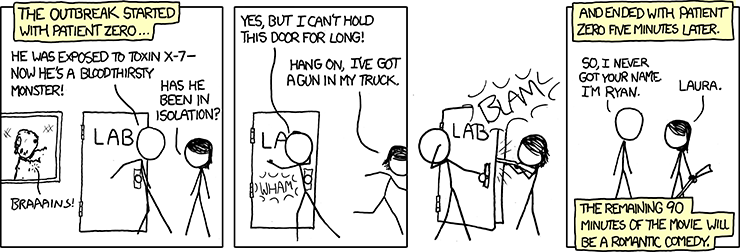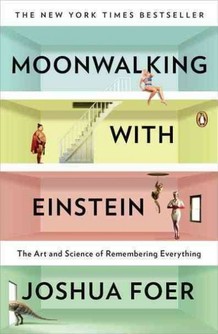
I’d like to submit for your consideration the fact that the M-4 Carbine, an assault rifle in heavy use throughout the US military, can fire up to 950 rounds per minute. Just keep that in mind and I’ll come back to it at the end.
Now, are you the sort who daydreams frequently about the zombie apocalypse?
Me too!
While eating a butterscotch Dairy Queen dip cone and strolling about a mall, I’ll find myself searching out the best routes to escape a zombie onslaught.
I especially tend to think about zombies whenever I’m in a parking garage. Escaping a parking garage infested with lumbering undead foes is not impossible, but it’s damn tricky. You’ll definitely have to hide under a van at one point and distract a zombie-business-man by throwing coins. Later you’ll be forced to slam a zombie-janitor’s head in a car door. Then you’ll hot wire a Honda Civic while a zombie-grandma pounds your window. You’ll start the engine just in the nick of time, accidentally reverse into a zombie-cheerleader, crush the zombie-cheerleader against a pillar to force her to release your fender, and smack into a few more zombies as you zoom out the exit.
There’s just something fascinating about zombies. They tap into our deep-rooted feelings of alienation.
There is one big problem, though, with the zombie apocalypse, at least as I’ve seen it depicted in just about every zombie movie or television show I’ve ever watched:
The zombies would so totally lose!
There are slow zombies, fast zombies, VooDoo zombies, and science zombies. (Science zombies are the product of either a rabies-like viral disease or radioactive chemicals, and they emerge when either the military–industrial–congressional complex or an evil corporation stops respecting mother nature and puts power/greed above common interests. Those stupid rat bastards.) But all zombies have a few things in common:
- They cannot be killed except by decimating their brains. A bullet to the head always seems to suffice.
- They are super strong.
- Their only real weapons are their nails and teeth.
- They desire human flesh.
- They carry the zombie plague in their blood or their saliva. You can touch a zombie without being contaminated, but scratches are dangerous, and if you’re bitten you’re definitely screwed.
If you think about it, other than the fact that they spread contagion, zombies are no more dangerous than most wild animals. They have no ranged weapons. Their only melee weapons are teeth and nails. Their teeth and nails are no more powerful, and are probably less powerful, than the jaws and claws of bears or wolves. Plus zombies have a host of other disadvantages:
- They are unintelligent, which means they should be easy to trick, to outmaneuver, and to lure into traps.
- They don’t communicate with each other.
- They feel no pain, which means they’re unable to avoid most kinds of injuries.
- They do not heal from wounds, they just ignore them. So they walk around with broken ankles and untreated burns and missing eyeballs.
Most zombies are slow and uncoordinated.
The slow-moving, uncoordinated, unintelligent zombies in the AMC television series “The Walking Dead” have somehow completely defeated the American military, and I just can’t buy that. How do brainless beasts with no weapons more dangerous than bear jaws and claws somehow defeat the American military?
The answer is that they wouldn’t. They couldn’t. The military would win. The zombies would lose.

Now, back to the M-4 Carbine. Just think about 950 rounds per minute of hot lead spraying out of that gun! The M61 Vulcan, a pneumatically powered Gatling-style rotary canon, can fire up to 6,000 rounds per minute. With weapons like these, you don’t even have to aim. Our soldiers would splat zombie brains without even trying.
Also, it would be relatively easy to produce armor that could withstand the bites and scratches of the zombies. Soldiers with such armor, with weapons like the M61 Vulcan, with state-of-the-art surveillance equipment like flying drones, and with armored vehicles to transport them to hot spots, would eradicate the zombie menace within a week. The zombies wouldn’t stand a chance.
I am unaware of any decent solution to this problem for fiction writers…




